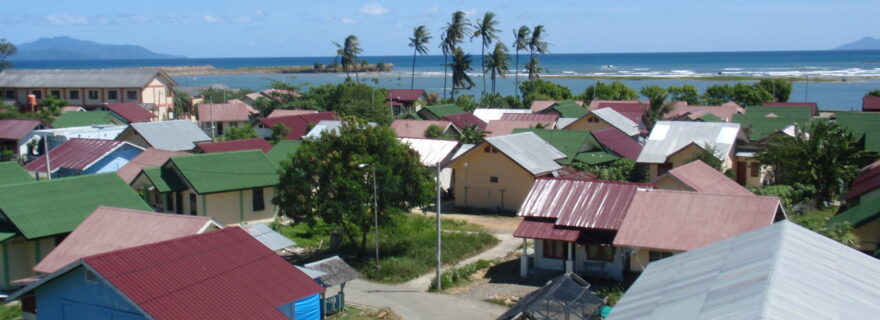Silence in the Post-Disaster Ethnographic Encounter
In this blog post, Annemarie Samuels reflects on the significance of unspoken and unspeakable experiences in the aftermath of the 2004 Indian Ocean Tsunami. Through a visit to a survivor, Ibu Yenni, she highlights how silences shape narratives and subjectivities in the wake of disasters.
One afternoon in May 2010 I paid a social visit to one of my neighbors in the Acehnese village where I had done extensive fieldwork on the post-disaster remaking of everyday life. This village had been entirely destroyed during the 2004 Indian Ocean Tsunami that caused an estimated 170,000 deaths in this part of Indonesia. My neighbor, whom I will call Ibu [mrs.] Yenni, lost many family members as well as her house and all of her belongings. She had managed to survive together with her two children. Like many other survivors, they returned to the neighborhood once an aid agency had constructed a new house for them in 2006 and since then Ibu Yenni had, using the money she earned as a primary school teacher, substantially improved her house with additional rooms, ceramic floor tiles and a fenced garden. I had known her since the first day I started doing ethnographic fieldwork in the village in 2007 and we often chatted informally when I lived there during several periods in the subsequent years. Yet she never talked about the tsunami. In 2007, most people in the village frequently discussed the tsunami, with me and amongst each other, and I conducted dozens of in-depth interviews about the disaster with many of my neighbors, who told me poignant, often upsetting as well as courageous, and always intensely embodied stories (Samuels 2016). But other neighbors had warned me that Ibu Yenni did not talk about her experiences and I never asked.
When I briefly visited Aceh in 2010 I dropped by at Ibu Yenni’s house to catch up, bringing some souvenirs from the Netherlands. As we sat down on the sofas in the guest room, her daughter brought out extremely sweet tea and Acehnese cookies. After exchanging some pleasantries, the conversation turned quickly to what had been the talk of the town since I had arrived: the 7,2 (RS) earthquake that shook the province a two weeks earlier. The word “trauma” had popped up continuously in most of my conversations, as people told me how they had run outside and jumped on their motorcycles to get away from the coast, sometimes grabbing the bag with diplomas and valuables that many tsunami survivors now always kept ready near the door. Ibu Yenni told me about her son, Andi, who was now ten years old and who had, she said, trauma. Although she had indeed mentioned this before, she now told me more elaborately about his problems. He had been five at the time of the disaster and he had seen the water coming, as he sat on the back of a motorcycle. Years later, he was still scared of being alone and he would start screaming if she arrived a minute too late at his school to pick him up. He would be terrified when anybody even mentioned the words “earthquake” or “tsunami” and if he felt only a minor earthquake, he would be crying all night.
When I stepped outside, warmed by Ibu Yenni’s hospitality and troubled to hear about Andi’s trauma, I realized that again she had not said a word about her own experiences. Perhaps it was easier to, vicariously, discuss her son’s trauma. Perhaps this was simply what worried her most. I may never know whether she did not want to, or could not, talk about her own tsunami story. We do know that the unspoken and the unspeakable matter a great deal in the shaping of people’s subjectivities (Good 2012). Silences may be strategic. They may indicate structural or political oppression. But they may also point at the limits of what can be articulated. They matter in how we interpret words, narratives, and discourses. Sometimes we will inquire into them during our research, sometimes we will write about them, and sometimes we will leave them alone (cf. Jackson 2004). My visit to Ibu Yenni once more pressed me to take note of silences, reflect on them, and perhaps without necessarily asking what they may mean, respect them and in writing convey how narratives are always in some way shaped by the unsaid, and sometimes the unspeakable.
This blogpost was originally posted on 30 May2017 on www.anthropologyofsilence.com
References
Good, B. (2012). ‘Theorizing the ‘Subject’ of Medical and Psychiatric Anthropology’, JRAI (N.S.) 18: 515-535.
Jackson, M. (2004). ‘The Prose of Suffering and the Practice of Silence’, Spiritus 4(1): 44-59.
Samuels, A. (2016). ‘Embodied Narratives of Disaster: the Bodily Expression of Experience In Aceh, Indonesia’, JRAI (N.S.) 22: 809-825.


